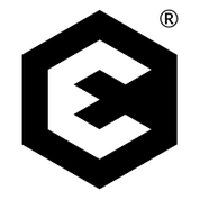There’s been a lot of attention on Bitcoin’s shocking environmental impact in recent months, and while efforts are being made to minimize the carbon footprint of the cryptocurrency, some investors are jumping ship in favor of greener options. With more than 4,500 mineable coins and tokens in existence, which, if any, are the most sustainable cryptocurrencies?
Table of Contents
- How we compiled this list
- As Bitcoin rises in value, the climate suffers
- #1. SolarCoin (SLR)
- #2. Powerledger (POWR)
- #3. Cardano (ADA)
- #4. Stellar (XLM)
- #5. Nano (NANO)
- #6. IOTA (MIOTA)
- #7. EOSIO (EOS)
- #8. TRON (TRX)
- #9. Signum (SIGNA)
- #10. Holochain/HoloTokens (HOT)
- #11. DEVVIO
- #12. Hedera Hashgraph (HBAR)
- #13. Chia (XCH)
- #14. Algorand (ALGO)
- #15. MetaHash (MHC)
- #16. Harmony (ONE)
- #17. Tezos (XTZ)
- #18. Flow (FLOW)
- #19. Avalanche (AVAX)
- #20. Gridcoin (GRC)
- #21. Mina Protocol (MINA)
- #22. ReddCoin (REDD)
- #23. GoChain (GO)
- #24. EFFORCE (WOZX)
- #25. GreenTrust (GNT)
- #26. Near Protocol (NEAR)
- #27. MobileCoin (MOB)
- #28. Electroneum (ETN)
- Special mention – Ethereum (ETH)
- (Not so) Final thoughts
UPDATE: Following the immense interest in this topic and great leads on other green cryptocurrencies, I’ve added even more tokens/networks below for our 2023 list. We’ve also written recently about the push for greater sustainability in the NFT community.
Keep the suggestions coming, ideally with solid leads/info on why a token deserves attention from investors who care about sustainability, and I’ll do my best to take a look. Are you a Dogecoin fan? See why everyone’s favorite canine-inspired cryptocurrency didn’t make this list here.
How we compiled this list
Truth be told, it’s incredibly difficult to point to any one currency as being ‘greener’ than others. This is because there are so many parameters at play. Many much smaller cryptocurrencies, for instance, naturally have a far lower energy footprint because they involve far fewer daily transactions compared to Bitcoin. Scale them up, however, and they may be just as bad, if not worse than the cryptocurrency we currently love to hate.
That said, some cryptocurrencies are inherently more energy efficient than Bitcoin. Why? Because Bitcoin relies on a ‘Proof of Work’ system that involves huge amounts of calculations (and, thus, processing power) to produce a single token. Cryptocurrencies that instead use a ‘Proof of Storage’ or ‘Proof of Stake’ system use far less energy, as do currencies using a technology called block lattice, which doesn’t require mining.
Even among ‘Proof of Work’ cryptocurrencies, however, some are more energy intensive than others. This is primarily because these currencies use ASIC-resistant algorithms that consume significantly more energy than should be expected relative to how much of the cryptocurrency market they represent. A good example of this is RavenCoin which, by one calculation, accounts for 4.32% of the total rated power of the top 20 cryptocurrencies but has a market capitalization of just 0.06%. Interestingly, Bitcoin uses an algorithm that does allow for mining ASIC-based devices, and these devices are considerably more energy efficient than conventional graphic processing units (GPUs).
As Bitcoin rises in value, the climate suffers
Market dynamics also play a big role in the energy consumption of cryptocurrencies. In numerous cases, market slides or crashes that drop the price of Bitcoin, Ethereum, or other big players in this area lead to miners slowing down or turning off their devices as it’s no longer profitable to run the machines at that price.
In November 2018, for instance, the Digiconomist estimates that Ethereum’s miners more than halved their energy consumption (from around 20 TWh to 10 TWh) in under 20 days because the price tanked. As the price of Ethereum has once again risen in 2021, so too has the energy consumption associated with the cryptocurrency. As of March 31st, 2021, Digiconomist estimates Ethereum as using more than 31 TWh annually, an all-time high.
So, which cryptocurrencies have a shot at being more sustainable than Bitcoin? Here are a few of the main contenders, in no particular order, presented with the caveat that this is absolutely not investment advice. At the time of writing, I have no investments in or ties to these or any other cryptocurrencies.
#1. SolarCoin (SLR)

SolarCoin is global, decentralized, and independent of any government. You can spend and trade SolarCoin just like other cryptocurrencies, but the key difference is that the platform aims to incentivize real-world environmental activity: verifiably produced solar energy.
How it works
SolarCoin has a novel approach to cryptocurrency, creating 1 Solarcoin for every Megawatt hour generated from solar technology. Currently, this network mostly relies on users uploading documentation to prove energy generation, but the Internet of Things may one day streamline this process with automatic updates from solar arrays.
Consider SolarCoin as a helpful way to more quickly offset the cost of installing a solar array!
#2. Powerledger (POWR)

POWR was an Ethereum token established in 2016/17 that powers the Powerledger platform. It debuted on Coinbase in November 2021, with the token’s price rising rapidly even while most cryptocurrencies fell in a market-wide crash.
POWR is required to participate in the Powerledger network and helps secure its various products, including energy trading, clean energy tracking, and verification.
As an aside, Powerledger is one of the few blockchains/cryptocurrencies I’ve encountered that has a female co-founder. Doctor Jemma Green is the Executive Chairman and co-founder and leads a team that includes several other women.
How it works
The Powerledger platform facilitates peer-to-peer energy trading and is effectively an operating system that tracks the trading of energy, flexibility services, and environmental commodities. More simply, renewable energy sources like wind and solar are somewhat uncertain, with variable output minute to minute, day to day. A centralized power grid is increasingly problematic when energy inputs and outputs are inconsistent. Powerledger offers a distributed, decentralized network that helps producers track, trace, and trade energy in real-time, making for more stable, resilient energy grids.
As a real-life example, Powerledger partners with the Midwest Renewable Energy Tracking System (M-RETS) to facilitate the trading of Renewable Energy Certificates (RECs) across North America.
In June 2021, POWR switched from the Ethereum platform to being a customized Solana-based blockchain. The rationale behind this move was to take advantage of the Solana code base’s scalability (which just isn’t there for Ethereum yet). Powerledger also integrated Safecoin’s voter subset consensus to reduce the number of administrative type transactions that the blockchain has to handle, keeping the platform secure and energy-efficient.
#3. Cardano (ADA)

Cardano was developed by the co-founder of Ethereum, Charles Hoskinson, and was tested by academics and scientists as the world’s first peer-reviewed blockchain. It functions mainly as a digital currency but can also be used for digital contracts, DApps, and other purposes. Compared to Bitcoin’s 7 transactions a second, Cardano can achieve 1000 per second.
How it works
Cardano is inherently more energy efficient than Bitcoin as it uses a ‘Proof of Stake’ consensus mechanism where those participating in the currency buy tokens to join the network. This helps save a staggering amount of energy, with the founder of Cardano claiming that the cryptocurrency network consumes only 6 GWh of power.
Cardano is similar in some ways to Ethereum, but without a lot of the bloat associated with the latter token. This enables Cardano to scale up to meet increased demands for the cryptocurrency, without compromising on speed or efficiency.
#4. Stellar (XLM)

The Stellar network was released in 2014 (forking off from Ripple) with the goal of bridging the gap between traditional financial institutions and digital currencies. Stellar doesn’t charge institutions or individuals for using the network and is increasingly seen as a serious alternative to PayPal as it enables faster, easier, and more cost-effective cross-asset and cross-border transactions.
Stellar is operated by the Stellar Development Foundation, a non-profit organization. It got its start with funding from Stripe (the payments startup), along with donations from BlackRock, Google, and FastForward. Tax-deductible public donations fund the network’s operating costs and the hard market cap for Lumens and removal of an inflation standard demonstrates that the SDF is looking to maintain a network that enables easy, accessible, low-cost cross-border payments rather than to make a quick buck with massive gains in the price of Lumen.
The network has also attracted serious engagement from IBM and Deloitte, as well as banking institutions in Nigeria, the Philippines, India, France, the South Pacific, and most recently the Ukraine. This brings to life the SDF’s vision to “unlock the world’s economic potential by making money more fluid, markets more open, and people more empowered.” Stellar was the first distributed technology ledger to receive certification as Shariah compliant.
How it works
Through the Stellar network, you can exchange US Dollars, Bitcoin, Pesos, Yen, and pretty much any currency traditional or crypto. The network’s token, Lumens, are used to facilitate these trades on the blockchain-based distributed ledger at a fraction of a cent and with great efficiency (which also translates to a lower carbon footprint). The network also allows individuals and institutions to create tokens for use on the network, which has inspired some to use the network for sustainability initiatives such as investing in renewable energy.
The key distinguishing feature of the Stellar network is its consensus protocol. This SCP is open-source and relies on authentication of transactions occurring through a set of trustworthy nodes rather than running through the whole network as a proof-of-work or even proof-of-stake algorithm. The cycle for authentication is thus much shorter and faster, keeping costs low and energy use to a minimum. The algorithm behind this is known as a federated byzantine agreement and is an energy-efficient alternative to the Bitcoin style traditional mining network.
Stellar’s token, Lumens (XLM), can be bought and sold on most exchanges, including Binance, Coinbase, Kraken, Bittrex, Bitfinex, Upbit and Huobi.
#5. Nano (NANO)

Nano is free, fast, and uses considerably less energy than Bitcoin and many other cryptocurrencies. It has been around since the end of 2015 and has a relatively small carbon footprint even now. It is also scalable and lightweight as it doesn’t rely on mining.
How it works
Nano uses block lattice technology, which is energy efficient. It is still reliant on a Proof of Work mechanism, but the block lattice goes beyond blockchain to create an account-chain for each user on the network. The Nano platform uses a system called Open Representative Voting (ORV), where account holders vote for their chosen representative, who then work to securely confirm blocks of transactions.
On the Nano platform, user accounts can be updated asynchronously, rather than needing to involve an entire linear blockchain as is the case with Bitcoin and others. Instead of competition and delays, then, Nano involves just the sender and receiver account-chains and can handle as many as 125 transactions per second.
#6. IOTA (MIOTA)

As a cryptocurrency, IOTA has not proven as volatile in terms of price as many other tokens. While good news for those looking for more stability in the market and greater financial sustaianability, this has proven disappointing for those investors looking for the same pay-off as with early investments in Bitcoin, Ethereum, or other altcoins.
How it works
In terms of energy sustainability, because IOTA uses Fast Probabilistic Consensus for consensus and only relies on Proof of Work in part, the overall energy consumption of the network is very small. The best figures available for IOTA’s energy consumption come from a PhD student called Amir Abbaszadeh Sori. Writing before the algorithm update, Abbaszadeh Sori calculated the average ECPT (energy consumption per transaction) for IOTA and found that each transaction used just 0.11 Watt hours.
This is very low, even compared to more established financial networks such as VISA and Mastercard. And, like many cryptocurrencies, IOTA blows Bitcoin out of the water in terms of energy use. With the new updates set to make Atomic Transactions the norm for IOTA, this could reduce the transaction size from 1.7kb to less than 100 bytes, presumably reducing the energy consumption accordingly.
Indeed, IOTA released figures in May 2021 outlining a possible 33-95% reduction in energy consumption associated with the Chrysalis upgrade, reducing the energy requirement to just over a millionth of a kWh per transaction.
To calculate the ECPT under the current algorithm though, Abbaszadeh Sori used three smartphones with different processors and versions of Android (but no iPhones) and sent an iota token 25 times with each device. The measure of energy used included approval of the transaction, complete proof of work, preparing inputs and outputs, validating the receive address, synching the account, and final validation.
While the results were very clearly in favor of IOTA as a much more eco-friendly cryptocurrency, Abbaszadeh Sori himself acknowledges some limits to his study. For instance, there’s no accounting for IOTA nodes and IOTA Coordinator energy consumption. And now we have an updated IOTA 1.5, which no longer has the Coordinator Node, these calculations are less relevant.
That said, if we take the above figure for EPCT and multiply it by the 1000-1500 transactions per second that the current IOTA system is said to be able to handle, this amounts to annual energy consumption for IOTA of:
1000-1500 TPS = 31536000000-47304000000 transactions per year
0.11 wH per transaction = 3.47-5.2 Gigawatt hours per year
At the low end, this amounts to around the equivalent of 2,459 metric tons of greenhouse gas emissions annually. That’s 535 passenger vehicles on the road for a year, or the energy used by 296 homes for a year. At the higher end, with 1500 TPS, the numbers rise to 3,687 metric tons of GHG CO2-eq. That’s 802 cars on the road for a year, and 444 houses powered.
#7. EOSIO (EOS)

EOSIO is a public blockchain beloved by developers because it is simple to set up and write applications in several programming languages, is highly scalable, and costs nothing.
How it works
EOSIO is another ‘Proof of Stake’ platform that uses pre-mined EOS tokens that can be traded on standard cryptocurrency exchanges such as Coinbase, Binance, and Kraken.
#8. TRON (TRX)

Based in Singapore, TRON is a non-profit organization and public blockchain supporting almost every programming language. The peer-to-peer platform allows creators to share applications directly on the blockchain, making the whole process more energy efficient.
How it works
TRON operates using decentralized governance based on a two-tier model of Super Representatives (SR) and Super Representative Partners, with every account able to become an SR and able to vote for SRs.
The TRON currency, Tronix, is pre-mined and can be traded on Binance and other exchanges, with big plans afoot for TRON’s future, including using it to create decentralized gaming platforms.
In October 2021, Tron announced its development of a $300 million fund called JustPlay (in partnership with APENFT and WINKLink) to invest in GameFi projects. Tron lends itself to decentralized gaming and this latest project leverages interest in play-to-earn apps on the Tron network.
#9. Signum (SIGNA)

In June 2021, Burstcoin officially changed its name to Signum, under the symbol SIGNA. The original Burstcoin is now essentially void due to a hard fork following a significant price decline after the crypto was delisted from Poloniex in May 2019.
Burstcoin was possibly the first blockchain to use Turing-complete smart contracts which allow for the creation of non-fungible tokens (NFTs) and use in on-chain games. As Signum, it likely remains one of the most environmentally friendly, sustainable cryptocurrencies as it has been using ‘Proof of Capacity’ rather than ‘Proof of Work’ since 2014 and recently updated to ‘Proof of Commitment’, along with the introduction of Smart Tokens.
How it works
With Signum, ‘miners’ are rewarded for using storage space for ‘mining’. Meaning that a computer with a 1 terabyte hard drive barely uses more energy to mine SIGNA than an idling computer. This makes it far more efficient than ASIC mining or GPU mining on a ‘Proof of Work’ algorithm. It also makes it more equitable as you don’t need high-powered tech to mine SIGNA; you can even mine it using old mobile phones!
In 2021, Signum introduced Proof of Commitment (PoC+) decentralized consensus as the evolution of the Proof of Capacity (PoC) consensus. Miners can easily increase their effective storage capacity by committing a SIGNA balance (stake) in their account. This helps secure the network and improves the miner’s chance of earning mining rewards. PoC+ is arguably more sustainable as it increases effective capacity without the need for more hardware.
In October 2021, Signum introduced Smart Tokens. The idea here is a blockchain where tokens exist outside of smart contracts. These tokens thereby avoid the constraints of smart contracts and don’t need to be imported into your wallet. They are “unique entities that can be transferred or traded directly between accounts”.
The network is driven by volunteers and in 2021 founded Signum- Network Alliance (SNA), a not-for-profit organization to help Signum fulfill its vision of sustainability and innovation in blockchain technology.
You can trade SIGNA on Bittrex, STEX, and other cryptocurrency exchanges.
#10. Holochain/HoloTokens (HOT)

2021 was a big year for Holo. The crypto token price rose to nearly 53 times that of the 2018 ICO price (in USD terms, as of December 2021) and the company gave its Elemental Chat platform a test run, with a public release expected shortly.
In September 2021, Holo released a “Sharding Ready” version of Holochain, followed by two additional releases to enhance usability by community developers and the Holo team.
The ICO revolved around a pre-sale of cloud-hosting services as transferable ERC20 tokens called HOT on the Ethereum public blockchain. Again, this makes Holo different to other cryptocurrencies in that it is backed by a tangible asset (cloud-hosting services). Holo charges a fee on transactions using the P2P network, meaning that revenue is tied directly to the number of apps and hosts on the network.
How it works
Holochain is an open-source framework for peer-to-peer applications and its token HoloTokens (HOT) requires no mining. This means that you don’t need any specialized processors, nor is there excessive energy use involved in generating this cryptocurrency. Anyone who hosts hApps on their computer or device can receive HOT in return.
Holochain is immediate and efficient, does not rely on proof-of-work or proof-of-stake, but still enables scalable crypto-accounting. Each user provides a small amount of computing and storage, allowing P2P web applications to function, in theory, at a massive scale without need for centralized data centers or infrastructure. This depends largely on how many users sign up, however.
The cool thing about Holochain is that it can operate through a regular browser, without Holo Hosts needing to install any software. This makes it much more accessible to new, curious, and perhaps hesitant users. Holochain provides a bridge from the decentralized, P2P developer world to existing payment systems.
Because Holochain is a ‘pragmatic compromise,’ as noted by the company itself, some parts of this network are centralized. This makes it rather unique among cryptocurrency projects which typically aim to be entirely decentralized and rely fully on blockchain technology. In essence, Holo acts as a bridge between a fully decentralized network and traditional, familiar internet browsers, helping to expand the ecosystem and marketplace for DApps.
#11. DEVVIO

DEVVIO’s initial community offering was set to occur in June 2021, but there’s still no sign of this happening as of December 2021. Details remain scarce, so while this has the potential to be a good ‘green’ cryptocurrency, I’m increasingly wary that it’s going nowhere, especially as the team doesn’t seem to have many actual developers on staff.
The Devvio platform does appear to have gained some attention for its work in the ESG (Environmental, Social, Governance) space, however. So, while this may not be a crypto that’s going to skyrocket in value if an ICO ever happens, Devvio may be worth looking at for companies that need help with their ESG program.
According to DEVVIO founders, the DEVVIO network uses one millionth of the energy usage of Bitcoin and generates far less in terms of greenhouse gases. It was designed specifically to reduce energy expenditure and be a ‘greener’ cryptocurrency. This is clear from the founders’ commitment to creating DEVVIO as a blockchain ecosystem that can support multiparty collaboration and trust across stakeholders working in the field of environment and sustainability.
The DEVVIO system can be used to authenticate green certifications, enable markets for carbon credits, and facilitate financing for sustainability projects. And it does this without creating inefficiencies and massive energy requirements as projects scale ever upward. This isn’t a proof-of-work blockchain like Bitcoin. Instead, individual nodes talk to each other, creating an energy efficient system. It is also time efficient in that a web developer can quickly hook into DEVVIO’s blockchain.
DEVVIO’s current partners include Avnet and Panduit, which help companies embrace carbon neutrality in part by connecting big corporations to companies generating carbon credits through specific actions such as tree-planting, installing solar power infrastructure, and so forth.
How it works
DEVVIO is a distributed accounting protocol based on sharding, layer 2 protocols, and an efficient consensus mechanism. It can currently execute up to 8 million transactions per second (TPS). Each shard represents a blockchain ledger and thousands of these shards can be added to eventually enable tens of millions of TPS. This is an example of horizontal scaling, meaning that because each shard is independent, every transactions doesn’t have to go through the entire network to be authenticated; it just has to go through one independent blockchain.
To create the necessary complexity for security, DEVVIO has transactions move between shards, but each wallet is only assigned one shard. Payment happens on one shard (as part of Tier 1) and settlement on another (the Tier 2 network).
#12. Hedera Hashgraph (HBAR)

Hedera Hashgraph passed the number of Ethereum (ETH) transactions on May 6th, 2021, making it one of the world’s biggest cryptocurrency networks. In theory, Hedera Hashgraph could process more than 100,000 TPS, which would allow it to easily rival Visa and other mainstream payment systems. Thankfully, this cryptocurrency (HBAR) is a proof-of-stake token, meaning it uses far less energy than proof-of-work tokens like Bitcoin.
HBAR has a current supply of around 8 billion hbars and a fixed supply of 50 billion hbars. It is a decentralized public network used for in-app payments, micropayments, and transaction fees, as well as for network protection. Developers can use Hedera to build secure applications with near real-time consensus. This is because instead of being a block ‘chain’, Hedera is more of a graph. In fact, it’s based on technology called a Directed Acyclic Graph (DAG) which means that the speed of transaction verifications increases as more transactions are added to the network.
The list of owners and the governing council of Hedera is impressive, including Avery Dennison, Boeing, Deutsche Telekom, DLA Piper, FIS (WorldPay), Google, IBM, LG Electronics, Magalu, Nomura, Swirlds, Tata Communications, University College London (UCL), Wipro, and Zain Group.
Hedera Hashgraph consists of four main services, including HBAR, the cryptocurrency that allows for low-fee, highly customizable transactions. The other services include smart contracts, file service, and consensus service.
How it works
Hedera Hashgraph works through a system called asynchronous byzantine fault tolerance (aBFT). This allows for high-level security even if there are malicious actors on the network. It is faster than Bitcoin or Ethereum because transactions are processed in parallel, rather than having to go through the whole blockchain in a serial manner.
The network reaches consensus through ‘gossip,’ with nodes on the Hashgraph talking to each other and comparing notes on the network’s transactions, instead of mining. Select transactions are deemed ‘famous’ by the nodes because they are communicated early in the gossip process and are then verified by multiple nodes across the network.
Hedera Hashgraph plans for more upgrades to the network in the second half of 2021, including introducing sharding. This will split the network into multiple shards to enable an increase in transactions.
One of the cool things about Hedera Hashgraph is that it is already being used to facilitate sustainability projects. This includes through Power Transition, a software system backed by Hedera Hashgraph. This highly scalable digital energy platform allows people and companies to control energy use from micro grids to national grids. It can help to reduce costs and make the move to a zero-carbon economy by dramatically improving communication between players in networks of any size, making for greater energy efficiency.
Power Transition estimates that the Hedera Hashgraph platform is 250,000 times more energy efficient than Bitcoin, using just 0.001 kilowatt hours per transaction, compared to 250 kWh for Bitcoin (Digiconomist puts it at 950 kWh), 55 kWh for Ethereum, and 0.003 for Visa.
#13. Chia (XCH)

Chia is another interesting cryptocurrency in that it can be mined on Amazon Web Services cloud computing platform. Setting this up takes just a few minutes, with chia ‘farming’ simple and straightforward compared to ‘mining’ of many other currencies.
Unlike many cryptocurrencies, Chia was created by a familiar name: Bram Cohen, the founder of BitTorrent. When the platform was launched, it reportedly led to a shortage of hard drives in China as people scrambled to acquire more storage space on which to farm XCH.
How it works
The Chia Network is a blockchain and smart transaction platform that allows users to take advantage of available hard drive space to run the decentralized network. Instead of proof-of-work, the Chia Network relies on proof-of-space-time. So, storing a certain amount of data over a certain amount of time can earn you XCH, Chia’s token. XCH was created in 2017 in response to the excessive energy use involved in mining crypto.
Chia farming was designed to be accessible, with no specialized equipment needed, nor massive amounts of power. The network’s blockchain transaction platform is called Mainnet and can be downloaded at chia.net. After downloading the software, you can choose to dedicate a portion of your uncommitted hard drive space to the network and this will then tick along nicely while your computer is running, without significantly affecting your machine’s performance or requiring vastly more energy.
#14. Algorand (ALGO)

Algorand is a proof-of-stake blockchain that gets its value because it supports smart contracts. The influence of each user on the network is proportional to their stake in the system, and Algorand’s blockchain is scalable and secure, as well as free from forks and other potential governance issues.
Released in late 2019, Algorand is also relatively new to the crypto scene but was able to manage almost one million transactions per day by December 2020. One of the founders of Algorand, Silvio Micali, is a profession of computer science at the Massachusetts Institute of Technology and a recipient of the Turing Award in 2012, in part for his contributions to cryptocurrencies and blockchain protocols, all of which inspires quite a bit of confidence when compared to other newer crytpos.
The speed of transactions on the Algorand platform and its low transaction fees, in addition to being a permissionless pure proof-of-stake blockchain protocol, all mean that the network is more accessible, scalable, and uses far less energy than Bitcoin and its ilk.
How it works
The pure proof-of-stake approach of Algorand means that all validating nodes are known to each other and have to agree to create a new block each time.
Algorand does not involve mining, and the network is trying to lead the way in blockchain sustainability by creating a carbon-negative network. It was designed to be energy efficient from the get-go and has committed to offsetting any emission gaps to reduce its environmental impact further. Micali himself has said, “I care about the planet” and that the proof-of-stake algorithm “drives electricity consumption to almost zero.”
On April 22, 2021, Algorand announced that its blockchain is fully carbon neutral, thanks in part to its partnership with ClimateTrade. This organization is a leader in carbon emissions transparency and traceability and the partnership with Algorand allows CimateTrade to enhance its sustainability efforts with corporations worldwide.
The Algorand Foundation is a not-for-profit organization behind this development. The Foundation also envisions bringing on board a whole community of blockchain and mainstream developers including those wanting to use the platform to support sustainable endeavors.
Algorand and ClimateTrade plan to implement a system whereby Algorand’s carbon footprint on-chain for a specific number of blocks will be notarized, allowing the equivalent amount of carbon credit to be calculated. This Algorand Standard Asset (ASA) will then be locked into a green treasury and the protocol will continue running as carbon-negative by carefully tracing and offsetting these amounts.
The Algorand blockchain currently has 10 billion ALGO, with distribution continuing to roll out up until 2030. ALGO is currently able to be bought and sold on Coinbase, Binance, OKEx, Kraken, and Huobi.
#15. MetaHash (MHC)

MetaHash offers a fast, efficient decentralized network with zero fees and the ability to mine/forge MHC using fairly low-key hardware. MHC is just one of four parts of the MetaHash project, the others being TraceChain, MetaApps, and MetaGate. TraceChain is an algorithm for routing traffic over the network. MetaApps allows users to write stand-alone decentralized applications using C++, PHP, and Solidity, among other programming languages. MetaGate is an open source user interface for third-party developers.
How it works
Metahash is another proof-of-stake protocol that is far more efficient than its pure proof-of-work counterparts. It originally operated using a delegated PoS mechanism but has transitioned to a multiple PoS mechanism to address issues that compromised decentralization of the network. In this system, “multi-layered validation provides the basis for protecting a network against corruption. In cases when the central
network entities, which generate blocks, appear to be corrupted, the rest of the network may vote to rebuild the network and to re-distribute the roles, thus, neutralizing the threat.” This model also allows validation and block distribution to run in parallel, decreasing consensus time and improving efficiency.
#16. Harmony (ONE)

Harmony is an Ethereum based, cross-chain application platform with a cryptocurrency (ONE) launched in June 2019. Harmony primarily creates a bridge between creators and consumers of non-fungible tokens (NFTs). Its main benefits are using an energy efficient proof-of-stake algorithm, very fast transaction times (with contracts finalized every two seconds), and impressive scaling capabilities.
In September 2021, Harmony announced a $300 million ecosystem development fund intended to encourage more crypto founders, builders and creatives to develop the Harmony ecosystem of apps and NFTs.
How it works
The Harmony platform uses sharding and FBFT consensus algorithms to increase speed and security and reduce the amount of energy required per transaction. This makes Harmony a fairly green cryptocurrency and blockchain.
Harmony works across Bitcoin, Ethereum, Polkadot, and the Binance Smart Chain and is focused on improving scalability across these networks.
#17. Tezos (XTZ)

Launched in 2018, Tezos was one of the original Proof of Stake (PoS) smart contract layer one blockchains. It was also one of the largest initial coin offerings every held, worth $232 million at the time (July 2017). Most (80%) of this initial supply went to investors, with 10% each going to the Tezos Foundation and Dynamic Ledger Solutions. The launch of the Tezos mainnet was delayed by a series of lawsuits from unhappy investors who argued that tez was, in essence, an unregistered security.
Tezos is an energy efficient Proof of Stake (PoS) blockchain that is self-upgradable, scalable, and secure. It is an impressive piece of crypto tech, with a reputation for transparency and innovation. The Tezos blockchain operates using the cryptocurrency tez (not capitalized) and has the ticker symbol XTZ.
Tezos was developed by Arthur Breitman, who published a white paper in 2014 proposing the blockchain. It took four years to launch the mainnet, with the intention from the outset being to create a network that actively invited contributions from the developer community.
How it works
Unlike Bitcoin, Ethereum, and many other blockchains, Tezos has an on-chain governance mechanism that allows the network to continuously improve without the need for a hard fork. This system means participants in the network can propose, vote upon, adopt, and deploy improvements efficiently.
The result is a leading edge blockchain network that can quickly innovate. The algorithm enables transactions to be processed quickly, cheaply, and at a fraction of the energy used by Proof of Work networks like Bitcoin.
Tezos is a collaborative network that operates without an official core team, or employees. It is an open-source software project, and anyone can contribute code to make the blockchain better. The decentralized project has various entities worldwide helping to support the platform’s growth.
The self-amendment capacity of Tezos avoids the issues with forking that have hounded other blockchains, such as Ethereum. Instead of needing to fork or split into two different blockchains when carrying out major upgrades, Tezos can amend itself without disruption to the network and without creating massive division in the community.
Another advantage to self-amendment is that the process of upgrading is more easily coordinated and executed at a lower cost. Further amendments are also easier to implement as there remains just one blockchain, not two or more that also require upgrades.
Anyone who stakes 8,000 tez is known as a Baker and can vote on proposed amendments and upgrades put forward by Tezos developers. The four-step procedure takes around 23 days, and proposals that receive majority support are then tested on a testnet for 48 hours. Those that gain support from a super majority are then fully implemented on the mainnet. Because of the minimum investment of 8,000 tez, there’s a financial incentive to contribute to the success of the network.
Using programming languages 0Caml and Michelson, which facilitate formal verification, Tezos is a super secure blockchain that can be used safely in the aerospace, nuclear, and semiconductor industries. All of this makes Tezos very attractive to a variety of users.
Who uses the Tezos platform?
Tezos allows users to build powerful decentralized finance (DeFi) apps, other tools, games, and NFTs on its network. Current users include Red Bull Racing Honda and McLaren Racing, as well as OneOf, an eco-friendly music-focused NFT platform with artists such as Doja Cat, Quincy Jones, and John Legend.
The French banking giant Societe Generale also signed on to use Tezos for a central bank digital currency.
You can buy tez on most major coin exchanges, including Binance and Coinbase.
#18. Flow (FLOW)

Flow is both a PoS blockchain that is fast, decentralized, and highly usable and the cryptocurrency native to the Flow network. It is designed for building games, apps, NFTs and other internet-scale protocols and applications that need low-latency (i.e., very fast processing times) and high-throughput (i.e., a lot of transaction happening very rapidly across millions of users).
Flow is a developer’s dream as the platform offers a ton of white papers that provide a complete specification of the system.
How it works
Flow is the brainchild of the team behind CryptoKitties and offers the unique approach of separating mining or validating roles into four distinct processes. This makes things both more efficient and more accessible: anyone with a reliable internet connection can participate as a Flow validator, thanks to a new encoding technique called Specialized Proofs of Confidential Knowledge (SPoCKs) which addresses the Verifier’s Dilemma.
In most blockchains, a single miner or validator performs all or most of the tasks of validation. This slows things down and means some of the work is carried out by multiple parties unnecessarily. With Flow, the pipelined architecture reduces this redundancy and improves efficiency and security by separating out the tasks. Even those with a small amount of computer power available can participate by performing some of the less energy intensive parts of a transaction.
The four validation roles comprise Collection, Execution, Verification, and Consensus, with no sharding needed. On Flow, smart contracts and user accounts can interact in one atomic, consistent, isolated, and durable (ACID) transaction, meaning things flow efficiently and developers can build seamlessly on each other’s code. With Flow, every application on the network can also function as a platform on which to build.
#19. Avalanche (AVAX)

Avalanche is a smart contract platform that uses a PoS algorithm and the native token AVAX, which is deliberately restricted to 720 million AVAX coins in circulation. It has an architecture that allows for custom private or public blockchains to be deployed as subnets, and these subnets can facilitate around 4,500 transactions per second, at a lower cost than networks such as Ethereum.
Avalanche is compatible with Ethereum’s programming language (Solidity) and is scalable and decentralized, secure and energy efficient. For these reasons, it is popular with developers building DeFi projects, NFTs, games, and more. The Avalanche network consists of three component blockchains: the Platform Chain (P-Chain) which coordinates validators and the creation of subnets; the C-Chain for smart contract creation; and the X-Chain for managing and exchanging assets.
Participants in Avalanche stake AVAX on the P-Chain to become general network validators. A stake can also be delegated to another validator, allowing them to earn a portion of the validator reward. It is also possible to specify validation of a particular subnet blockchain.
#20. Gridcoin (GRC)

Gridcoin is an efficient decentralized blockchain that uses idle computational power to carry out scientific research through the Berkeley Open Infrastructure for Network Computing (BOINC). The platform was launched in 2013 and uses a Proof-of-Stake algorithm. Participants in the network are rewarded with coins using a Proof of Research algorithm through BOINC.
The open source platform uses the native coin GRC and current projects include protein folding through Rosetta@Home, mapping the Milky Way galaxy (Milkyway@home), and figuring out solutions to public health and clean energy problems (World Community Grid). Unlike other scientific cryptocurrencies, Gridcoin can support a wide variety of different projects, limited only by what users of BOINC broadcast.
How it works
As a decentralized network, Gridcoin performs transactions peer-to-peer cryptographically, meaning there’s no need for a central authority to disburse rewards. The original Gridcoin (Classic) used a hybrid PoW algorithm, allowing participants to hash half the time and donate half time to science. The Gridcoin-Research algorithm made the PoW component obsolete as this PoS algorithm allows nearly all the computational power go to science while a tiny amount maintains and secures the blockchain.
Researchers can create their own projects on BOINC for free, and Gridcoin rewards people for granting access to unused computer power otherwise unavailable to these researchers. BOINC has been running since 2003 and is a well-regarded and secure system.
#21. Mina Protocol (MINA)

Mina is touted as the world’s lightest blockchain at just 22 kb. It is powered by participants, who quickly synchronize and verify the network. This makes it arguably more sustainable and egalitarian than many other blockchains which require intermediaries with heavy computational power to run nodes.
Mina Protocol was founded in 2017 by Evan Shapiro and Izaak Meckler but took four years to build and test before its launch in March 2021. In April 2021, the Mina Foundation held a community token sale that raised $18.75 million for the project. This money will be used to maintain the network’s assets and distributed by the foundation as grants for community developers.
The MINA token powers the network, with users rewarded for creating blocks and validating transactions. The initial coin offering was one billion MINA tokens, with more added over time and inflation managed through Mina Protocol governance.
How it works
Mina is decentralized and so lightweight that it allows every participant to act as a full node in the PoS consensus. Transactions are computed off-chain and verified on-chain, using a much smaller proof than most other blockchains. The small proof represents the state of the whole chain, rather than the latest block.
Because Mina is built on a consistent-sized cryptographic proof, the blockchain remains accessible even as it scales to process billions of transactions. In contrast, the Ethereum blockchain went from just over 5 GB in 2016 to 220 GB in 2021, meaning that the network requires validator nodes to have a huge amount of memory and processing power.
To send and receive transactions on Mina, every participant has to run a node. The algorithm also requires block producers and snark workers to run effectively. Snark workers help compress network data and generate proofs of transactions. Block producers then bid on these proofs and select the transaction to include in the next block (a bit like conventional validators or miners).
MINA helps to secure the network and can be used to interact with ‘Snapps”, or decentralized zk-SNARK powered applications built on the Mina Protocol. Invented by MIT professor and Algorand founder Silvio Micali, zk-SNARKs stands for “zero-knowledge succinct non-interactive arguments of knowledge. These apps validate and share proofs of data without sharing the data itself – an attractive system for decentralized finance.
One of the first Snapps, Teller, is a handy app that helps users keep their information private while proving their credit score to traditional financial services in order to access loans. Such apps are also easily scalable while remaining efficient and cost-effective.
#22. ReddCoin (REDD)

ReddCoin is a standout alt coin designed for use on social media as a digital social currency for tipping or rewarding individuals, charities, or other organizations without requiring an intermediary. ReddCoin uses a PoS velocity (PoSV) algorithm, and the full amount of every tip goes to the recipient, unlike with platforms such as Patreon, GoFundMe, JustGiving and others where the intermediary takes a cut to fund the system.
ReddCoin has itself received donations and is now self-funded and volunteer-run. Established in 2014, ReddCoin is a longstanding cryptocurrency that has seen many improvements, including to its PoS algorithm. There are more than 60,000 users of Redd in more than 50 countries, owing to its ease of use across major social media platforms such as Facebook, Twitter, Reddit, and Instagram.
How it works
ReddCoin uses a Proof-of-Stake Velocity (PoSV) algorithm to validate blocks. This process is called ‘minting’ instead of ‘mining’ on ReddCoin and uses both ownership and activity to delineate value. This algorithm requires much less computing power compared to mining and enables fairly fast transactions (just 60 seconds on average) at low or no cost.
Because ReddCoin’s algorithm is streamlined, transactions can be done on cellphones and other small devices. In fact, everyone who holds ReddCoin is automatically a minter, with a higher stake meaning a greater chance of finding blocks and being rewarded with more ReddCoin.
ReddCoin scales easily and can trade higher volumes as demand increases. And the simplicity of ReddCoin means that even those who don’t understand cryptocurrencies’ underlying technology can still use it easily. Indeed, ReddCoin is about to launch the ReddMobile app which will make social tipping even more straightforward. The app will allow users to tip others with ease and to store, send, and receive ReddCoin on their phones. Existing ReddWallets and ReddIDs can be imported to the new app and the wallet is used to stake ReddCoin with up to 25% annual returns possible.
#23. GoChain (GO)

GoChain was founded in 2017 by a team with experience in cloud computing. The idea was to build a network that was scalable without being energy intensive. It processes transaction in 3-5 seconds, can handle 1300 transactions per second, and has an average fee of $0.01 at the time of writing. GO is the native token on the network and is required for every transaction sent to the GoChain.
The initial coin offering occurred in 2018 and raised a hard cap of around $13.7 million. GO is an Ethereum based ERC-20 token and can be used to access all GoChain services. There are currently nearly 500 million tokens in circulation and plans for another billion to be added gradually.
How it works
GoChain is a smart contract platform and can be used for transferring tokens and storing files. It is compatible with Ethereum but has a fraction of the carbon footprint, so developers wanting to cut their environmental impact could easily switch chains without requiring code rewrites.
GoChain uses a Proof-of-Reputation consensus mechanism. This is similar to a Proof-of-Authority model, which GoChain still uses for nodes with a very high reputation. The difference is that the GoChain algorithm accounts for all participants’ reputations in ensuring a secure network. To engage in the blockchain, a user has to have a reputation, meaning that anyone trying to cheat the system is quickly prevented from further activity.
#24. EFFORCE (WOZX)

EFFORCE is the brainchild of Apple founder Steve Wozniak (hence the ticker symbol). The entire purpose of this unique blockchain is to help crypto investors make money while contributing to environmentally sound energy efficiency initiatives.
Typically, the energy efficiency industry is a complex multiparty financial system that is hard to navigate, especially for the average investor. EFFORCE makes investing in energy efficiency projects simple and accessible, which has the potential to dramatically increase overall investment in the sector and a more sustainable future.
Wozniak first dreamt up EFFORCE in 2017, along with co-founders with experience in energy efficiency projects. A presale and roadshow took place in 2019 and the platform development was finalized in 2020 for factories and real estate projects and then listed on HBTC. In the first quarter of 2021, EFFORCE completed its first efficiency project and began Energy Efficiency Sharing.
The WOZX token was listed for trade on BitEx in April 2021 at the same time that the software platform was opened to the public. A capped number – 100 million – of WOZX were created at launch, with 45% of the tokens allocated privately, including 20% to EFFORCE itself, 20% towards mining incentives, and 15% for ecosystem and consulting activities.
Mining occurs once a successful project launches on EFFORCE. Any token rewards are then issued on a sliding scale over a ten-year period. This helps to protect liquidity of the asset and the value of the token over time.
How it works
EFFORCE allows you (or your company) to offset your future energy bills by investing in energy efficiency projects now. The EFFORCE algorithm then uses smart contracts (called Energy Performance Contracts, or EPCs) to redistribute resulting savings to token holders and initial investors. The redistribution of these rewards is based on exact energy consumption and savings data without the need for any intermediary to assess or estimate savings.
The beauty of EFFORCE is that it commodifies energy savings by creating a new tradable asset class, which has the effect of helping to scale up energy efficiency investments for the benefit of all of us. Energy efficiency has, according to EFFORCE, twice the potential of renewable energy investments in this early phase.
EFFORCE also makes investing in energy efficiency projects more democratic and financially accessible. Where the sector has typically been limited to major investors and large contributions from just a handful of parties, EFFORCE allows anyone to invest at any amount. EFFORCE also solves the problem of putting contributors and savers in contact.
The platform also acts in a consultancy role, guiding projects through development and funding. At least 1% of total energy savings from all of the projects will be distributed to all EFFORCE token holders. This may be adjusted through the platform’s governance mechanism, with token holders having voting rights.
#25. GreenTrust (GNT)

GreenTrust is a sustainable decentralized blockchain with a carbon neutral network and the aim to help the world become carbon neutral by 2050.
The network runs on the GNT token which can be exchanged for carbon offset certificates. The general idea is to use the blockchain to better measure, reduce, and offset everybody’s carbon footprint. For every 350 transactions on the network, GreenTrust plants a tree.
How it works
GreenTrust is powered by Binance Smart Chain and uses a consensus mechanism Proof-of-Stake Authority (PoSA) which is energy efficient, fast, and low-cost. The network’s smart contract was audited in June 2021 by Techrate and the GreenTrust project is building partnerships with likeminded organizations also aiming to decarbonize the global economy.
GreenTrust’s transaction fees help fund tree planting and will be used to develop renewable energy projects. There is a total supply of 126 trillion GreenTrust tokens, of which just under 25% are currently in circulation.
GNT is available on Binance, PancakeSwap, and ApeSwap, as well as several other exchanges.
#26. Near Protocol (NEAR)

Near Protocol is a certified carbon neutral blockchain that hosts various apps, NFTs, games, and more. It even includes an app that helps facilitate the buying and selling of used cellphones. The Near Protocol development platform uses the NEAR token and is also a foundation and collective that gives out grants to develop the Near ecosystem.
The network is energy efficient and low cost, with users and developers earning 30% of transaction fees. And by using the network, users are already offsetting CO2, whether they intend to or not!
NEAR also plans to release an NFT platform called Mintbase, on which crypto artists will create digital artworks that represent South Pole projects. These NFTs will be auctioned off and a majority of proceeds will go towards CO2 offsetting projects in developing countries that are results-based and verified by a third party.
How it works
Near Protocol is a development platform that runs a sharded, PoS, layer one smart contract. The network works with programming languages Rust and AssemblyScript.
Holders of NEAR can participate in network governance and earn tokens for staking or securing the network. NEAR can also be earned by winning a NEAR hackathon, being active in the community, engaging in development bounties, and other activities that help grow the ecosystem. You can also receive NEAR from friends even if you don’t have a NEAR account. This is done through the NEAR Drop, whereby one person can pre-fund a new account and then send a hot link to the account for someone else to retrieve the tokens.
Near was certified carbon neutral in February 2021 by South Pole, a leading low-carbon project developer, and climate solutions provider. This was due to NEAR offsetting its first year’s emissions through documented, verifiable, tree planting and reducing subsequent emissions. The foundation uses a measurement method that includes direct and indirect emissions associated with the network. This includes electricity used to power the network, purchased hardware and cloud services, and even emissions associated with travel and teleworking by the NEAR team.
#27. MobileCoin (MOB)

If you like Signal, you’ll probably already know MobileCoin. This super simple payment method was adopted by Signal as an energy efficient near-zero energy cryptocurrency that runs on the back of existing mobile phone networks. It is easy to use, carbon negative, private and secure, and offers near instantaneous digital cash payments.
To achieve carbon negative status, fans of MobileCoin donated renewable energy to offset the entire network’s emissions for the foreseeable future.
The founder of Signal was an early technical advisor for MobileCoin and the blockchain has attracted a range of key investors including Coinbase Ventures. It raised $66 million in Series B funding and around $107 million in total funding after four years in development.
MobileCoin is also a supporter of the arts and culture, with a platform called MobileCoin Radio offering space for creators to showcase their work. This is for audio, digital, spoken word, and other work, and there’s even an Artist in Residence program courtesy of MobileCoin.
How it works
MobileCoin was designed to be used by anyone with a cellphone. Breaking down barriers to engaging with cryptocurrencies, the network engages directly with messaging apps on your phone or desktop computer. It is encrypted, secure, and private, and the blockchain runs on a federated byzantine agreement (FBA) algorithm. This makes MobileCoin energy efficient and fast while remaining decentralized.
The platform has a number of open source libraries including MobileCoin Fog and MobileCoin is available on hundreds of millions of devices worldwide. It is a leading cryptocurrency payment network, if not the most popular digital cash application. MobileCoin has also secured partnerships with US banks to allow in-app purchasing and direct-to-bank account conversions.
MobileCoin is available on FTX, BitFinex, buymobilecoin.com, and other platforms.
#28. Electroneum (ETN)

Similar to MobileCoin, Electroneum is a cellphone based crypto payment platform launched in 2017. It is based in the UK but has the intention of providing a safe, fast, and secure payment system for the billion or so people with no traditional banking services worldwide.
Electroneum had an initial coin offering of $40 million and launched its wallet manager in December 2017. Around half of the total supply of Electroneum tokens are now in circulation, amounting to more than 10 billion ETN coins.
In March 2018, the platform launched one of, if not the first Android mobile mining application. The founder of Electroneum, Richard Ells, also founded and launched AnyTask in 2019. This freelancing platform focuses on giving freelancers in developing countries access to the digital economy. Sellers on the platform pay no fees and don’t need a bank account.
How it works
Electroneum was originally built using the Monero codebase but migrated in 2019 to a Proof-of-Responsibility (PoR) blockchain. Unlike the original permissionless network, which allowed anyone to mine ETN for profit, the move to PoR allows for miners to be hand-picked by the project. This permissioned network has 12 validators, all of which are non-governmental organizations (NGOs). These entities earn rewards for validation and use these to fund charitable work. In the future, universities will also be able to act as validators on the network.
The Electroneum network was one of the first to adopt AML/KYC measures to safeguard transactions. As a moderated blockchain using PoR, the network is insusceptible to a 51% attack, with a mechanism to prevent any group of miners from owning more than 50% of the network. If or when an attack does happen, the rogue validator can be shut down quickly and efficiently.
By offering an on-phone mining app, Electroneum democratizes mining, removing the need for expensive, power-hungry servers. Miners are expected to spend block rewards earned through Electroneum’s PoR algorithm to support humanitarian projects, though this isn’t measured or verified in any way. The algorithm is energy efficient, using an estimate less than half a kilobyte per hash.
Electroneum allows for cross border transfers, with the ability to send ETN anywhere in the world at almost no cost.
Special mention – Ethereum (ETH)

Ethereum has been making a big song and dance about going green for many years, but there’s been little follow through on all that promise. The cryptocurrency still uses enough energy every year to power a major country and as much electricity per transaction as could power an average U.S. household for a day. Still, Ethereum is more energy efficient than Bitcoin and they’re at least trying to make things better.
The founder of Ethereum has long admitted the wastefulness of the bloated cryptocurrency and in 2014 began a lofty project to overhaul Ethereum’s code with the help of the open-source movement. The plan is to replace the current Proof of Work model with a Proof of Stake mechanism, but progress has been slow. As of 2019, the developers scrapped their original strategy of rebuilding the plane while it is in the air and instead adopted a two-chain approach where Proof of Work and Proof of Stake temporarily run alongside each other. They dubbed this Ethereum 2.0.
In December 2020, Ethereum launched Beacon Chain as the first step in this shift of the network. Under Beacon Chain, Ethereum 2.0 stores and manages the registry of validators and deploys the Proof of Stake consensus mechanism. It is currently running alongside the original chain, however, with full implementation not planned until 2022. This means that the touted one hundredfold reduction in energy per transaction is yet to be realized.
(Not so) Final thoughts
With more than 4,500 tokens out there, I’m sure I’ve missed a few excellent options for sustainable cryptocurrencies. Given the exponential growth in this area of digital finance, chances are the best is yet to come anyway. If you know of an eco-friendly cryptocurrency, please leave a comment or send us an email and we’ll take a look. Feel free to check out our environmental analysis of the Dogecoin as well.
In the meantime, if you’re an investor who has already reapportioned your assets from fossil fuel companies and so forth into more sustainable investments, consider doing the same with any cryptocurrencies you hold. And if you already have a solar array set up, or are living a sustainable lifestyle, there’s basically nothing to lose by signing up to SolarCoin and/or BitGreen.
Have a look at hedera hashgraph, they are being used by mutliple companies that are present in the energy sector.
https://www.ptvolts.com/
https://hedera.com/blog/top-5-global-utility-edf-joins-hedera-governing-council
Thanks for the tip! We updated the piece to add even more sustainable cryptos (including Hedera Hashgraph!).
Great article thanks! Hedera was already on you list (first of the additional six) 🙂
Great. also check out Harmony ONE
As a mental health provider, I am super excited by the Never Alone project the Chopra Foundation is partnering with Hedera to create for the world. Check it out. https://neveralone.love/
I would love for you to give opinions on Power Ledger (POWR).
As a novice I tried to find cryptos with a physcal product that could be envirnmentally posirive.
Would appreciate thoughts on this one
Hi can you comment on SavePlanetEarth token please.
It sounds like a great project but I cant find any info on the tech behind it?
Thanks
Great article, however, you missed a newcomer that is not even on the Blockchain. It’s called CloudCoin and is on a new system called RAIDATech. Check it out! Faster, cheaper, cannot be hacked even by Quantum computers and NO environmental impact!
Please take a look at GLOBALGIVE , it’s a GREEN CHARITY TOKEN and has amazing potential!
(Also a great hardworking team, helpful community, weekly AMA’s and first charity is Urangutans )!
GlobalGive.financ
#GGIVE
I am not sure if you have looked at it, but a glaring omission for me is Stellar. Stellar was created by one of the cofounders of Ripple. Stellar has a similar objective to Ripple but is overseen by a Foundation rather than a company as is the case with Ripple. It’s focus is to better enable cross-border currency exchange by building a blockchain for legacy banking systems to use as a transport and exchange infrastructure, essentially replacing the costly slow SWIFT system. Stellar is proof of stake with extremely low fees. To my mind it has similar properties and objectives to Nano. I believe Stellar is a strong contender for this list, certainly more so than Ethereum will ever be.
I completely agree with you completely!
Yes i think that thé good choice
Thanks for the heads-up. I dug into Stellar and have added it here. From what I see, Stellar isn’t proof-of-stake (it uses the federated byzantine agreement) and is actually more efficient than networks using that algorithm. Could be that if/when Ethereum figures out its switch it might be a serious rival to Stellar, but in the meantime the latter is clearly gaining the advantage.
missing OkCash the most energy friendly and sustainable crypto with proof of stake 3 hybrid
Thanks for the tip, Steve. Another one for us to look into!
A notable mention is tokens for green projects possibly such as MobiFi which would have an overall green effect that would more than offset any carbon produced.
Am I missing something Stellar is number four on the list.
Yes. As noted, the list is not in order of best to worst. There are more than 4,500 crypto networks. Ranking them is a fool’s game, so we’re just presenting a list of ones to consider and are happily adding more as folks in the know point out worthy contenders.
Hi!
Thanks for this informative post. I‘m currently looking into sustainable cryptocurrencies and came across FLOW – and I had the hopes to read more about it here (unfortunately not, but I’ve learned more about others and potential alternatives, so thanks for that! :)). Do you know more about FLOW? I tried my google skills but somehow they‘re not good enough to find reliable information whether this currency is worth a try or not ..
why not IOTA?
Algorand isn’t on the list but Ethereum is? Lulz! Ok. Maybe you forgot to look at Algorand. I’m very pleased that you mentioned Burst though. Burst should be bigger than it is. Check out Algorand if you haven’t already. They check off all the boxes and they are the fastest and most secure of them all.
You mentioned Algorand (which is amazing) and should have been on this list, thus you have my axe brother! Never heard of Burst, will check it out.
I mean, IOTA here is the perfect example, you should definitely mention it.
I was thinking this too. Iota fee less eco friendly and soon to have the options of being centralised or decentralised.
Hbar. Really an amazing project.
Agreed with Hbar. There’s a couple of green projects being built, and the energy consumption is minimal.
Hedera HBAR looks like a green machine with the DLT silver bullets.
I’m really conflicted. On the one hand, the article looks very well researched. On the other hand, the greenest technology is missing: IOTA.
Nano TPS is not 125, its around 700 (battle tested with the resent spam attack). And TPS scales with hardware, so 700 is not the limit.
I am very sorry that you have no information about Avalanche (AVAX). It uses PoW and 4500 TPS.
Not PoW, it’s an improved version of PoS. I calculated it’s a few Watt per transaction compared to Btc’s 707 000 Watt. This would put Avalanche in #1 greenest cryptocurrency. Awesome technology, staking, governance, DEFI. What do you do when Crypto dips? You buy the dip or at least stake/provide liquidity to an AMM so that when your coins gain back in value you have more.
Hey, thanks for this list. really informative
You forgot to mention Hedera Hashgraph’s HBAR, which is the most environmentally friendly of them all.
Thank you very much for this article! I was reluctant or even opposing the cryptos because of their reported energy consumption. I am happy there are positive alternatives among the coins albeit not many and not the main ones. I think it is a shame and ignorance that most of the loud crypto enthusiats do not acknowledge this terrible ecological footprint of their hobby/religion while they belong to the same generations that so strongly fights against the climate change, be it by opposing cars, flying or coal plants.
I totally agree. Spread the word! For me, Cardano is one of the most promising projects not at least because of their engagement in Africa.
Thanks for making me aware of it. I did not know about. I will have acloser look at it. One more point I would like to mention. What a shame that no cryptocurrency has successfully started using scientific computation like Boinc or World Community Grid. This would be a great project to connect these worlds and not waste electric energy for financial speculations only.
There is Gridcoin exactly for that 😀
Check out Chia! chia.net
Chia.net used hard disk space instead.
Please look into a project called DEVVIO which will be on this list soon. Please search for Devvio and check out their website for further info. Join their telegram group as their token sale will be aiming to go public in June 2021.
Thanks H, and hang tight. DEVVIO will be featured in a forthcoming piece about even more sustainable cryptos!
HI H, how do we do this? I’ve been googling these guys like mad but nothing on their upcoming ICO or how to find out when that may be.
How can you not have included Holochain? Energy consultant of only 3 MWH per day, as compared to Bitcoin at nearly 200,000 MWH per day. No blockchain can compete, and transaction speed is limitless.
Thanks for the tip. Watch out for a companion piece to this initial foray into sustainable cryptos!
Please check iota
thanks for posting this great article.. I am particularly pleased to see less energy wasteful options being taken up. If we are talking about sustainability then my primary asset is MHC – metahash. its Proof of Stake based, and achieves a massively high throughput with fast confirmations based on efficient use of nodes.
That approach sees over 160000 (160K) Transactions per second, under 3 second finality and zero fees with largely low power hardware. That high basic throughput means that it has so much space to grow before the managing nodes need an upgrade… Metahash is also properly environmentally friendly – it was built to be efficient and to perform with low specification node servers. Unlike other fast blockchains or ‘distributed ledgers’, Metahash is fully decentralised and offers great daily ROI for the staking element. MHC is 3 years into produciton is here to stay and its only just getting started!
I saw another person ask about FLOW as well. I was just curious to its level of sustainability. I mess around with an NFT called NBATopShot (Virtual basketball trading cards). It’s a ton of fun, and i’ve made some profit. I face a moral dilemma depending on if FLOW is sustainable or not. If anyone has any info them lmk, Thanks!
Thank you!! I don’t like paying so much in SWIFT fees. Thank you God for creating Stellar and saving my kids energy for tomorrow!!
I don’t believe that Peercoin (PPC), the first coin to introduce the concept of Proof-of-Stake isn’t in this list.
Thanks for the tip, Mario. With more than 4,500 cryptocurrencies out there, it’s great to get feedback so I know where to focus my research. Will look into Peercoin.
What is your opinion on POWR? (Power Ledger) – it’s supposed to be supporting environmental initiatives. I have about $10k of POWR.
Wow, no mention of Algorand?????? It should be No. 1 on this list. It is the best, greenest project out there which already has active projects and is being heavily explored for many countries’ CBDCs!
Hang tight, Salvo! We’ll be publishing another piece shortly with a few more sustainable cryptos (including Algorand!). With more than 4,500 out there, it sure was hard to stick to just nine with this first piece!
I am appreciating this post especially following Tesla announcement a couple of hours ago. I was wondering if anyone heard of Mina Protocol as I am surprised there is not much cover on it and I was under the impression ay be wrong) it had the least fossil footprint.
Any thoughts?
Same. It looks promising to me 🙂
There are many projects that are more Sustainable then BTC in my opinion. Personally I like the vision behind Reddcoin for instance, it’s a Sustainable Cryptocurrencie that also wants to help others through charity, in my personal opinion a winning combination
The current estimate of electricity use by the RAIDA is much lower. There are no RAIDA right now that have more than a 500 watt power supplies. In reality, RAIDA are idle 80% of the time so they only use about 200 watts per hour. Also, the average cost of electricity in the world is $.13 per kWh for businesses. So the total yearly costs of the RAIDA are closer to $5,694 with each RAIDA costing $227 in electricity per year. The average price per transaction is believed to be .00003 cents.
The costs of the RAIDA is so inexpensive that, like the DNS system, the infrastructure can be run by volunteers. Hence, CloudCoin has no fees.
All other payment systems are much more expensive to operate. Bitcoin is estimated to use 61.76 Terawatt-hours (TWh) per year. A Terawatt is 1,000 Gigawatts. That makes CloudCoin 235 thousand times more efficient! That is so large that it is difficult for people to believe. However, it is true. There’s no way that cryptocurrencies can compete with RAIDA-based technology when it comes to electricity usage.
CloudCoin uses a patented technology and it is unlikely that there could be any system that would be faster. RAIDATech, however, is working on a “Digital Dollar” project that will reduce electricity usage even further. By using pure binary, smaller authenticity numbers, and the UDP transport protocol the bandwidth can be reduced by 30%. However, if a transaction costs .00003 cents or .00002 cents, it doesn’t really matter to the consumer. The fact is that CloudCoin and its patented technology is by far, the most efficient payment system in the world and will remain that way for a long time.
Bandwidth
CloudCoin uses less bandwidth than any other payment system. Last month (June 2020) CloudCoin had over fifteen-thousand users who traded more than 150 million CloudCoins. Only 27.64 GB of data was required to handle the 3.7 million requests needed for the transactions. Considering that an Xfinity home Internet plan costs $10 for 50GB each month, the entire RAIDA uses only $5 worth of bandwidth each month. In comparison, it is estimated that each Bitcoin node requires 20Gb per month. There are 100,000 nodes at a cost of over 2 Petabytes per year. That means Bitcoin uses 533 thousand times more bandwidth than CloudCoin. We call CloudCoin the “Last Digital Currency” because it is the first currency to obtain near perfection based on the “Theory of Perfect Money” and nothing more is needed. What is perfection? Perfection is a coin that can trade 24/7 in any part of the world with no fees. A coin that uses nearly zero electricity and bandwidth. A coin that is 100% private because it requires no usernames, logins, passwords or public ledgers. A coin that can be recovered if lost and theft can be mitigated. A coin with a fixed amount so that there is never any inflation. A coin that is file-based and separates data from logic so that it can be hidden in jpeg files or imported into software and video games. A coin that is patented by the USPTO so that it will not have thousands of copy-coins at least for the next 20 years. CloudCoin has a “Skywallet” that allows people to send coins using easy to remember DNS names. A digital currency that is quantum safe and will survive the extinction of cryptocurrencies that could occur in just a few years.
wise token .. quite possibly the most organic and natural crypto token on the entire market .. !
Gochain is the Greenest Fastest Cheapest most sustainable blockchain out there. It’s a shame your article wasn’t better researched.
Wow! Thank you for the investment of your time and wisdom, very kind. I’m brand new to cryptocurrency and currently use Coinbase, however, there are a lot of coins that I’m not able to buy on there, that said, which other trusted platforms with diverse crypto coins would you suggest.
Thank you again,
Corey
Tezos is the first proof of stake Blockchain.
10 millions time less energy consuming than Bitcoin and Ethereum.
Tezos is the first, the best and will be the last blockchain
great list glad i have some on there . What about POWR?
Have you considered adding GoChain to your article? It’s an incredible, high throughput, eco friendly project, which is compatible with ethereum.
I was wondering why GoChain did not make the list? They pride themselves on being a green blockchain and is far quicker and more efficient than Ethereum.
Have you looked at WOZX created by Apple founder Steve Wozniak “EFFORCE is the name of the project, WOZX is the name of the token. It’s the first of its kind. A blockchain-based energy-saving platform.”
Nucypher $nu is energy efficient encryption coin.
You should have a look at Harmony ONE project. It’s greener than most of the projects on the list. It is highly flexible and eco-friendly.
Harmony ONE. You will love it <3
harmony ONE is the best for ecosystem <3
I am surprised you never mentioned Ankr. It is listed in coinbase and ankr claim to be using green energy and support ecosystem in their website.
Hi Leigh, Please can you amend the MHC review? MHC has never been proof of work, its been designed as highly efficient and fast with proof of stake from day one!
There are loads more features lined up to come – and i’m sure that the decentralised status and current 160,000 transactions per second with sub 1 second finality is not anything that any of the other coins can touch.
Check out the metahash website and dive into the telegram chat for more details/confirmation!
Done! Thanks for highlighting this, James.
Yes, while going through the above mentioned tokens, it is understand that HBAR uses far less energy than others.
elrond kilowatt-hours consumed per transaction 0.0052 and 263000 tps the best
Can you point me to a source for these figures please, Guy? Thanks.
Here’s the breakdown in kilowatt-hours consumed per transaction Elrond — 0.0052 XRP — 0.0079 Dogecoin — 0.12 Cardano — 0.5479 Litecoin — 18.522 Bitcoin Cash — 18.957 Ethereum — 62.56 Bitcoin — 707
Hi Guy,
Could you let me know where you get these numbers? Would be really helpful!
Thanks,
Leigh
Wenn die geteilte Liste für nachhaltige Projekte im Bereich der Kryptowährungen tatsächlich realistisch sein soll, muss IOTA hier in der Auflistung mit erwähnt werden.
IOTA hat effektiv einen geringeren Energieverbrauch pro Transaktion als Mastercard.
Hi Leigh, love your article! 🤩🤩🤩 Very apropos. We really need to save the planet and make sure the whole blockchain space is doing its part. 👍. BTW, I noticed an error in your article worth mentioning. Metahash (MHC) was never PoW; its basis from the very beginning has always been PoS. It would be great for you to make that correction. Many thanks!
Thanks for this, Big Al (and to all the others who noticed the same error). It seems quite a few credible resources mention MHC as being PoW originally and transitioning to PoS, so I appreciate the prompt to dig into the history of the crypto.
Leigh
Awesome! Thanks for the correction. 😄👍
Thanks for the article, this is really interesting considering the crypto environment right now.
Have you heard of GreenTrust? Not sure if there is anything in it but there website says they are committed to reinvesting all profits in initiatives aiming at helping the world become carbon-neutral in 2050. Interesting.
Hi Leigh,
Great write up and very informative! Thanks for putting this together. I learned about a few new coins in here I will check out.
I did have a major concern with one of the coins on here, chia. While mining it is supposed to be very energy efficient, it’s abusive of hardware. That means more electronics in landfills at a much faster rate. There’s a lot of material popping up out there as it becomes more widely known. Here’s one of many articles that lays it out well: https://www.euronews.com/2021/05/12/what-is-green-cryptocurrency-chia-and-just-how-eco-friendly-is-it
Hope this helps as you continue writing!
Thanks Again,
Ryan
Thanks for this, Ryan.
You’re absolutely right that part of the sustainability equation should be the hardware being used for these networks. Thanks for the info on Chia. I’ll check it out.
Leigh
My pleasure! And again, thanks for doing the leg work to collect up this list! I hope the traffic this post generated also brought wider viewership to the rest of your blog.
Just wanted to mention Tezos (XTZ). It’s a solid project that’s Proof of Stake – a lot less energy. It’s got a lot of proven features and has shown that it is able to update and adapt rapidly without hard forks. It’s also not an Ethereum clone, but built up on its own fundamentals. It has become increasingly active with NFTs on Hic et Nunc.
Please look at SPE They have a goal of planting 1 billion trees around the world. They have made partnerships with the government of Sri Lanka and Maldives to plant trees and save the environment.
SPE should be on the list. Here’s their official site http://www.saveplanetearth.io/
SavePlanetEarth, SPE should be on this list. Professional team, great cause – greener planet
I think Gridcoin deserves to be in this article. It is important to first note that sustainability is not just about energy but also about waste and social equity. Compared to with the examples shown here it is by far better for three reasons: 1) it uses proof of research to mint coins. 2) It rewards computation work for scientific research through the BOINC Network. 3) It uses idle time of whatever computing you have. These reasons put together make it a much better alternative than any of these examples. Why? Practically all energy use is put to a meaningful purpose. There is very little incentive to hoard hardware to mine coins so it does not contribute to increasing e-waste. You can judge it by yourself: http://Www.gridcoin.us
Hey Filipe I totally agree with your that in order for a project or in this case a coin to be called sustainble, it must add social, economic and environmental value, not just one of the 3. You recommend looking at Gridcoin. Any others? Thank you!
Near Protocol (NEAR) is certified as carbon neutral, so probably merits a place on the list… 🙂
https://near.org/blog/near-climate-neutral-product/
Good Job, Leigh! This is great starting point on discussing the Green initiative. Thank you!
Thank you so much. The article is clear. And full of trustly information. Let’s Go on theese eco friendly cryptos.
Elon Musk, sent a new signal, looking for ecofriendly and more efficient cryptos. Not to the carbon generating, it has no sense Tesla making electric cars, but thinking to operate financials on BITcoin if this one lead to minign on carbon generating electricity… You just have to read the interlines on that… to esee where are the future on cryptos going…
THANK YOU VERY MUCH FOR writing this article.
Dfinity – the internet computer – has just launched and they’re project is the most eco-friendly green cryptocurrency out there, to my knowledge. They are also in the top 10 now by market cap. Definitely worth including in this list!
You should take a look at IOTA (mIOTA), it should definitely be topping this list. Very high TPS, few seconds confirmation times, energy wise you can do about a billion worth of transactions for every BTC transaction, and 100% feeless. Developed by a non-profit foundation in Germany with 150 employees, it’s an absolute game changer in the crypto world.
Why is IOTA not included in this list? At present, this is probably the most energy-efficient crypto solution. Consumed 0.0000016 kWh for 1 transaction vs 980 kWh for BTC.
Why is there no IOTA? It’s feeless and it uses more than 600 milion times less energy for transaction than Bitcoin. It’s one of the most promissing and green coins at the moment. You should really take a look at it.
Another one to look at is the Blurt Blockchain Proof of Work Cryptocurrency. You mine Blurt from blogging on https://Blurtter.com …. I do it from my iPad or iPhone powered up with my Solar panel. It doesn’t get greener than that. You can trade your Blurt crypto for Bitcoin, Ethereum, Dogecoin on the Ionomy Exchange.
I would expect IOTA to be on this list? Especially with some of those mentioned on here. Iota has no mining, with all computing power done by the device making the transaction.
Where is IOTA ?
Uhm, where is IOTA? Without any miners, without fees ? Don’t know a DLT that is more green than IOTA. All of your mentioned Projects are far away from IOTA.
Nano does 1200-1300 tps on the beta network. … Usually (hundreds of) thousands of transactions are precomputed, that is, you generate them in advance, save them and then broadcast them to the Nano network as fast as possible.
NANO Stress Test 100,000 Transactions Per Second … – Reddit
Hi,
Do you have a source for this info other than Reddit? If so, I’d love to see it!
Thanks,
Leigh
Hello, your article about Nano is not exactly right, because:
Nano does 1200-1300 tps on the beta network. … Usually (hundreds of) thousands of transactions are precomputed, that is, you generate them in advance, save them and then broadcast them to the Nano network as fast as possible.
NANO Stress Test 100,000 Transactions Per Second … – Reddit
Hi,
Do you have a source for this info other than Reddit? If so, I’d love to see it!
Thanks,
Leigh
Another quite interesting and energy efficient project is Skycoin, even though the aim is quite different from the mostly financial direction of the ones listed here. Maybe that’s why I like it 😸
I’m astounded that an established project like IOTA is not on the list. It is hands down one of the most energy efficient cryptocurrencies out there – built for a small footprint from the ground up!
You should look at MobileCoin. The payment method adopted by Signal. It is extremely fast and very energy efficiency… It runs on the back of existing mobile phone networks
i have cardano but i also like this MHC
Why not even mention IOTA? the most sustainable of them all?
Must know about EGLD…from Elrond
In my opinion they will be the next green gold of the market.
Harmony $ONE 💙
They have FUTURE TECH NOW! 🎉
BETTER THAN ETH 2.0!😍
Random state sharding, Proof of Stake, 2 SECOND Finality, Energy efficient, $0.0001 Transaction Fees, Permissionless….
The list goes on, check out there website out!
You missed an absolute GEM here! 💎
Nice to see articles like this. As a huge believer in the revolutionary technology of cryptocurrencies and a believer in the existential threat of climate change. We need to think about this topic. I’m stuck, however, with the contradiction of putting a project like eth on a list of most sustainable chains. What is this article really about? Is it just opinion and a survey of sustainability issues. Eth COULD do a lot but IS it leading the industry in sustainability?
Given the massive interest, I think that a more quantitative approach might be merited. I was very interested to hear Algorand lay claim to being the greenest blockchain. How do we analyze that claim? What is a valid framework?
Is it marketing? (Yes). Is there validity to it ?(maybe). Are they to be applauded and rewarded (yes, for seeing the importance, but really only if there is some validity.
In short, I for one would love to read more. Any recommendations welcomed!
Thanks for the thoughts, Eric.
The purpose of the piece is to draw attention to the whole issue of sustainability in the crypto field and offer up a few of the networks for consideration that appear to be better than Bitcoin and other purely PoW networks, not to be a comprehensive, categorical list of the absolute best networks (which is a fool’s game!). With so little hard data to go on in terms of energy consumption for each of these networks, and constantly changing hash rates and market volume, the quantitative approach I’d love to take just isn’t practical or possible.
We are trying to find a better way to present the data we do have though. And I’d love to see more robust data in peer reviewed papers more recent than 2019, which is currently the most thorough research I have to go on. It’s also deeply frustrating when advocates/evangelists for these networks claim they’re ‘green’ and even offer a few numbers but don’t cite sources or show their working.
As for including Ethereum, this struck me as important given the comparison between Ethereum and Bitcoin as the two major players in the crypto world. Sure, it is far from the absolute best in terms of energy consumption, but the network founder and the development team have demonstrated an appetite to change the algorithm for the better and have introduced a lot of folks to the idea of PoS instead of PoW, which is valuable.
Leigh
Here is a more recent article: https://doi.org/10.1007/s12599-020-00656-x
But as the authors point out, trying to achieve a single number for each cryptocurrency is a fools errand as the actual consumption can vary significantly with the market conditions. The important conclusion is that PoW is orders of magnitude worse than any PoS in terms of energy consumption.
But the title of your article is sustainability not energy consumption, so as I said in another reply above, you need to consider the three dimensions of sustainability: Social, Economical and Ecological. Energy is only a fraction of the problem, and no one knows for sure how is the energy used by miners produced. In any case thank you for your work covering this issue and your willingness to discuss and improve it. Regards
IOTA is being used by big brands and is more green by far than some of the proposed ones. It is the future of the IOT.
I suggest Treedefi. They use 1/3 of their fees for planting trees. (https://treedefi.com/) already donated thousands of trees during their short existence. Not an individual blockchain, just a BNB token, but worth a few lines in this article.
Btw, Chiacoin will crush the HDD/SSD… its everything just not green.
Was hoping to see some love for GoChain in this article, in terms of energy consumption and carbon footprint it beats all of the above solutions & it’s fully compatible with the Ethereum network so developers could simply switch chains without having to rewrite their code.
Suggest taking a look at Cartesi for the list, a good list and glad to see Algorand was added, definitely deserves to be.
Hey, thank you for your interesting post and this cool list 🙂
What Im really missing in this list is IOTA.
IOTA is not a blockchain. There are no miners. There are no fees. The new IOTA network is now 60% more energy-efficient than before. IOTA is fundamentally different. Feeless, sustainable and future-proof.
See where IOTA is involved regarding climatechange:
https://twitter.com/iota/status/1393196077482917892?s=19
You should have an look at IOTA. This ist Project wich is not based on blockchain. Its based on the Tangle. Highly efficient. 1 BTC Transaction = millions IOTA transactions. Look at IOTA.org
whats about Iota? It has 0 transaction fees and energy costs of only 0,0000016kwh per transaction.
I can’t believe you left out IOTA from this list. It is probably number one.
Free transactions means it’s energy use is practically 0. Couple that with industrial partners coming out it’s ears (Dell, VW, Jaguar Landrover, Bosh, Fujitsu etc)and lots of great stuff in the pipeline then you have one of the top projects in crypto.
Burst the top, Guys!
It costs for now only 0,01$ it will PUMP high soon!
What about iota? Must be the “greenest” technology out there.
https://blog.iota.org/internal-energy-benchmarks-for-iota/
Wow thank you so much for all the incredible information on this page it was super useful to reposition after the “eathquake” Musk caused with his tweet which raised a very important issue..
STELLAR and RIPPLE look ready (short term) to go to the next level in my opinion and there are so many other you mentioned with huge potential.
Private investor
RChain should be considered here. They’ve built a state of the art PoS blockchain platform aimed at supporting humanity in facing the threats of climate change.
Take a look here https://rchain.coop/whitepaper.html#Introduction-and-Motivation
Hey nice article, I tend to only bet on ETH 2.0 and RChain, please check RChain it should be mentionned here, They’ve been working on scalable and energy ultra-efficient smart contracts for 4+ years.
Polygon (MATIC)?
RChain is definitely worth taking a very close look.
RChain is pioneering transparent and secure transactions with an ultra-fast, global scale technology platform. Cooperative governance and a sustainable economic model make RChain a public utility that can be applied to climate change, data security, digital identity, and many other challenges we are collectively facing.
Its architecture which implements RHO calculus is truly unique.
Please look at RChain, they are heavily focused on climate and to my understanding have the best solution to the scalability trilemma with their concurrent blockchain. Probably the most undervalued blockchain out there and to my belief the best of the best blockchain.
https://rchain.coop
https://youtu.be/DYuXhoVmOGQ
Rchain’s setup generally puts it in a different league from the rest. It is the only project that provides true concurrency and linear scalability. Relatively unheard of at the moment but the superior tech will win out. It’s also a lot further on in my opinion. Lots of the projects listed above are still struggling with inherent flaws and are still to be really tested.
I see that Rchain was mentioned above, but I wanted to add my support for consideration. The protocol has an eye towards the impact of blockchain projects on the environment and the Coop has had a dedicated climate & coordination team for years. Not to mention the blockchain is POS, scales with additional hardware, and has cracked the nut of sharding.
All should really check it out – https://rchain.coop/whitepaper.html#Introduction-and-Motivation
I’m glad you included Hedera #12 but some of the details are incorrect. And yes, I think it should be #1 in your list since it could provide consensus for every other project 😉
CORRECTION ON HOW HEDERA WORKS [I CAN’T CONFIRM NUMBERS OR DATES]:
Hedera Hashgraph passed the number of Ethereum (ETH) transactions on May 6th, 2021, making it one of the world’s biggest cryptocurrency networks. Hedera Hashgraph is planned to scale geometrically without limit (using sharding), which would allow it to host/provide consensus for every other payment system and blockchain simultaneously. Thankfully, this cryptocurrency (HBAR) is a proof-of-stake token, meaning it uses far less energy than proof-of-work tokens like Bitcoin (although staking is a little different using the hashgraph algorithm vs a blockchain so there’s no need to lock up tokens or slash).
HBAR has a current supply of around 8 billion hbars and a fixed supply of 50 billion hbars. It is a decentralized public network used for “notorizing” and timestamping transactions (including encrypted data for privacy) sent to nodes by applications and is broadcast out via “mirror nodes”, to be stored since the mainnet nodes focus on processing vs storing. The hbar token is used for payments and fees in addition to staking for network protection from Sybil attacks. Developers can use Hedera to build secure applications with near real-time consensus. This is because instead of being a block ‘chain’, Hedera uses a type of Directed Acyclic Graph (DAG) which means that all transactions are independently gossiped across the network simultaneously all following random paths. Each is given a network timestamp when it reaches >50% of the nodes.
The list of owners of the governing council of Hedera is impressive, including Avery Dennison, Boeing, Deutsche Telekom, DLA Piper, FIS (WorldPay), Google, IBM, LG Electronics, Magalu, Nomura, Swirlds, Tata Communications, University College London (UCL), Wipro, and Zain Group.
Hedera Hashgraph adds five main services to the core Hashgraph engine: cryptocurrency (HBAR), smart contracts, file service, consensus service, and token service (doesn’t require smart contracts).
How it works
Hedera works through an algorithm called Hashgraph which has the highest level of distributed consensus security called asynchronous byzantine fault tolerance (aBFT). This allows for high-level security even if there are malicious actors on the network or firewall blocks. The algorithm acts like an engine that processes transactions via gossip-about-gossip with virtual voting. Hedera Hashgraph is faster than Bitcoin or Ethereum because transactions are processed in parallel, rather than having to go through the whole blockchain in a serial manner.
The network reaches consensus through ‘gossip,’ with nodes on the Hashgraph talking to each other and comparing notes on each transaction’s history of movement around the network allowing for virtual voting (weighted by hbar stake per node) by each node independently (without broadcasting receipts), instead of mining. There is more detail on the virtual voting process in the Hedera whitepaper (includes voting rounds and determining famous witnesses, etc…)
Hedera Hashgraph plans for more upgrades to the network in the second half of 2021, including introducing sharding. This will split the network into multiple groups of nodes to enable an increase in transactions.
One of the cool things about Hedera Hashgraph is that it is already being used to facilitate sustainability projects. This includes through Power Transition, a software system backed by Hedera Hashgraph. This highly scalable digital energy platform allows people and companies to control energy use from micro grids to national grids. It can help to reduce costs and make the move to a zero-carbon economy by dramatically improving communication between players in networks of any size, making for greater energy efficiency.
Power Transition estimates that the Hedera Hashgraph platform is 250,000 times more energy efficient than Bitcoin, using just 0.001 kilowatt hours per transaction, compared to 250 kWh for Bitcoin (Digiconomist puts it at 950 kWh), 55 kWh for Ethereum, and 0.003 for Visa.
[I don’t know much about PowerTransition except it’s pilot project in the UK. I met the founder in 2018. No idea if the information or plans are correct so I can’t comment.]
No mention of IOTA??
Please add Rchain to the list. It’s being built with the aim of enabling coordination at global scale to tackle climate change. It’s proof of stake, so no mining, and scales linearly meaning the network speed directly correlates to the number of nodes added. Check out https://rchain.coop/climate.html for more info.
Hi,
why is XDC missing from this list? It might even be the greenest coin of all.
Try to look at Electroneum (ETN)
What about vechain?
Rchain already has all what is important. Should take a look.
Anyone heard of Dfinity? Now rebranded as ICP Internet Computer, lightning fast, extremely efficient, WEB 3.0!!
RChain!!
It joined the climate chain colaction.
How could it be missing?
Its technology is impeccable.
Thanks for the analysis Leigh.
On eth official page, new data have just been shared (EF blog). Merge to 2.0 would reduce by 2k/2.2k times energy consumption (2.62MW?).
Any idea if there is a sum up table, coin per coin of Wh, Wh/tx, TPS…?
I thank all of you for commenting and pointing out new ones that I have not researched , YET!! Great article I hope more people start leaning in this sustainable direction!!
Hey, brilliant blog it was a fantastic read. The only crypto I was expecting to see that had not shown up was VITE. They are a feeless DEX, similar to Nano that also have DAG technology in place using the HDpoS (similar to proof of stake) consensus mechanism for their blockchain. Very green and efficient blockchain.
All in all, great read. Thank you!
This is a solid list to start. We should all take a look at Peercoin as well. This coin is the ORIGINAL proof of stake cryptocurrency.
At one time before the flood of altcoins and their ICOs and pre-mine offerings, Peercoin was number three behind BTC and ETH. The project has a lot of integrity and the developers have been adamant about green blockchain services and equal access/opportunity from Peercoin’s inception.
I realize you’ve got a lot of people on here making suggestions. Peercoin hasn’t had any scandals or cash grabs and is entirely focused on low energy consumption as well as true decentralization and the fact of the matter is a lot of these blockchains will be able to exist in tandem.
I hope you consider this project that has been plugging away in the background waiting for a people to take notice. They believe in the merit of their project and not paying to play in the crypto game which ultimately leads to pump and dumps situations.
Thank you for you time and consideration.
http://www.peercoin.net
Excellent article! As an engineer in the sustainability sector, and also someone interesting in investing in green crypto currencies, this is exactly the type of intelligent information needed to make informed, investments decisions.
I’ve seen some discussion about the Harmony ONE blockchain and it’s token/coin, ONE. It’s being promoted as an “eco friendly” crypto utilizing state sharding and proof of stake.
I’m curious to get your opinion of this crypto currency and it’s viability in the eco friendly space.
Thanks for bringing attention to sustainability in crypto .
My burning questions:
Why Bitcoin is not considering a new btc2.0 – PoS and low energy protocol, like eth2.0 and others ?
But if Btc2.0 get made one day, could it become backwards compatible with btc – so that holders could make a swap of all their btc coins to btc2.0 coins – and as such outphase it over time ?
Thanks again for your thoughts!
It may only be a new token but GGIVE (GlobalGive tokenshould be on this list.
It has 0 involvement in mining and every month it gives money to a charity in protecting the earth. Last month’s charity was supporting orangutans in the rain forest. And today they will release the next charity they will be partnering with. Search them on Google. The project started 1/5/21
Look at Helium HNT, uses the same electricity as a 5w light bulb.
I had no idea! Thanks for the information.
Lisk (LSK) is missing from the list. It’s really something you should look into. It’s a DPoS consensus algorithm.
Phantasma is Eco-Friendly and Carbon Neutral. NFTs are part of the blockchain’s core functionality. So, NFTs minted on the Phantasma blockchain are also Eco-Friendly and Carbon Neutral.
https://phantasma.io/nfts-go-green-with-phantasmas-carbon-neutrality/
I’m a vegan, and I care about the environment. I’m also co-founder of Blockchain Developer – BlockchainDeveloper.com. Ethereum was the primary blockchain that we use to recommend for building on. Now we are suggesting Phantasma. Because it’s fast, has minuscule transaction fees, and is environmentally friendly.
I want to point out that some of the platforms listed here aren’t functional yet, or ready for launching projects. Phantasma is functioning now and already has projects launching on it. Plus, Phantasma is committed to being eco-friendly, which is a core value of the team behind the Phantasma blockchain.
Phantasma is a layer-1 blockchain platform. So, every project that launches on Phantasma can say they use an eco-friendly carbon-neutral blockchain.
Because NFTs are part of the Phantasma platform’s core functionality, projects using NFTs on Phantasma will also be eco-friendly and carbon neutral.
Isn’t Algorand carbon neutral?
Interesting that the world’s most efficient (as only a few watts to produce currency) was left off the list? Someone send them to Timekoin. It is almost as old as bitcoin because watt for watt it makes all other green coins pale by comparison.
Thanks for the article! Really gives hope for a better and greener crypto alternatives.
Your #1 coin is base on SOLAR Energy which doesn’t work and isn’t even green at the moment.
Currently Solar Panels sold to most retail have a life span of less than 10 years and cost more fossil fuels to build then they save- hence a net loss.
— Until we have improvement in not just the lifespan of solar panels (as well as wind energy which also isn’t working), but we also need an efficient battery to store energy which we also currently don’t have.
But hey, at least it isn’t named after Biomass……….
This was not very well researched, there is number of crypto platforms out there not on this list that uses far less energy than a few watts.
I am surprised they left out Timekoin. The nodes/miners can run on solar-powered Raspberry Pi <2 watts. Be good to get another follow-up on this story with deeper research.
NEAR Protocol (https://near.org/) has achieved the Climate Neutral Product Label by South Pole.
NEAR is a developer-friendly, proof-of-stake blockchain protocol that scales with sharding.
South Pole is the largest provider of voluntary carbon offsetting solutions.
NEAR does more for the climate, for example, by providing Green NFTs via Mintbase. Sale proceeds and royalties are split between projects that plant trees and the NFT artists: https://near.org/blog/toward-a-better-planet-green-nfts/
Elrond becomes the first carbon negative european blockchain, opening a new wave of sustainable innovation in line with the european climate policy, leading a new wave of highly scalable and energy-efficient blockchain innovation. Elrond has become carbon negative by offsetting more CO2 than the network accounts for.
The Elrond Network’s current capacity of 15,000 transactions per second, scalable beyond 100,000 TPS, brings a 1000-fold improvement in throughput and execution speed, while the energy required for processing a transaction is up to 6 million times lower.
The sustainability experts from Offsetra have conducted a rigorous analysis of the Elrond blockchain’s carbon footprint by measuring the energy consumption of more than 5,000 servers spread across 30 countries on 6 continents, the network linking them, and the additional impact generated by product development and operations.
The observed 6M kg CO2 footprint was offset by retiring carbon units equivalent to 7.4M kg CO2, netting a 25% positive impact on the environment for the Elrond blockchain. The network has thus achieved carbon negative status, through the first in what will become a series of investments in verified green projects.
More info in the following links:
https://elrond.com/blog/elrond-carbon-negative-offsetra
https://offsetra.com/profile/elrond
How about Zilliqa, the first blockchain to introduce sharding. Very green option.
What’s about Near Protocol (NEAR)? This is a proof of stake, carbon neutral crypto + ecosystem. Worth looking at it… (http://near.org)
Check out Power Ledger. Peer to peer solar electricity trading.
I would say check out Telos, JoinSeeds and Localscale. They all support sustainability.
Energy Web Token!
Where is Casper?
lol where is Peercoin? It’s pioneer of proof of stake and working since 2012 and had a leaf logo
Check for telos
Pi Network is worth trying out. Very sustainable. It’s not huge yet but it has some potential.
Thanks for the writeup. You have SolarCoin at the top of the list but when I look at them on Coinbase they’ve flatlined since last Spring. What’s going on with SolarCoin ? Seems iffy at best given the last 6 months of data.
Hello, I think that another sustainable enough option may be Toncoin built on top of the TON blockchain:
ton.org
They brand themselves as a third-generation proof-of-stake blockchain, woth potential for some million transactions per second, which is in the order of a million times faster than in Bitcoin, so I assume that they must be about as many times more efficient as well.
What makes it interesting is that it is (now unoficially) supported by Telegram, and increasingly well integrated with it, which makes it very likely to end up being actually used by millions of people (like how WeChat Pay is extremely common in China and Line Pay increasingly accepted in Japan, but with crypto instead of our bank details). So it should actually help build a more convenient and efficient economy instead of just serving as a product of speculation (although its value is obviously bound to increase as the userbase increases)
Signum and PoC+ are the best crypto invention of the 21st century!
One of the greenest coins is XRP and it is also a Grandfather Coin that has been around since the beginning. But it uses significantly less energy than Bitcoin and Ethereum per transaction. Yahoo Finance has an article breaking down the numbers. XRP is closely related to Near and XLM and I’m sure others on this list. It’s a pioneer on the green crypto wave.
One study warned that Bitcoin could push global warming beyond 2°C. Another estimated that bitcoin mining in China alone could generate 130 million metric tons of CO2 by 2024.
We should focus on to make cryptocurrencies sustainable & eco friendly.
Don’t you think Dovu (DOV) should also be on that list? Please check it out.
Not mentioning a market-caps Top10 cryptocurrencie with one of the lowest power consumptions per transaction (0.0079 kWh per transaction) which is supported by a foundation which officially claims to be carbon-neutral until 2030 is kind of interesting. XRP is definitely missing.
One of the top spots probably should be Safecoin as you already mentioned it in the Powerledger Consensus. We tried running a Validator on an old Laptop and it is incredibly efficient. Website says ~0.0000027kW per transaction.
Very interesting! A few of the presented cryptocurrencies I already knew, but I have not heard of most of them. I’ll take a closer look at that in a few minutes!
My approach so far was that in the search for sustainable cryptocurrencies should be avoided especially those that, such as, Bitcoin, are based on proof of work and can not or do not want to change this condition. Here in the article, there were, after all, options presented that are based on Proof of Stake. I think that’s good. But there are other cryptocurrencies, such as Idena, that are based on Proof of Personhood. This method is not only energy efficient, but also linked to a crypto identity that can connect the crypto world with everyday life. Such a crypto identity could be applied in the future for consensus finding in different areas of life. Those who are interested can do further research on this.
I also find the idea of the Solar Coin very exciting. As it is at the moment, it sounds complicated. But in a combination with the IoT, I can well imagine that it will be a success!
Personally i would also add Idena but that’s cause i am sucker for coins who are really going all on regarding sharding technology and i am kind of a fanboy for the proof of personhood protocol instead of proof of work as a consensus mechanism. Mostly a solid selection anyway, thanks for sharing that article – it’s a shame, that crypto is often automatically blamed as cosumption risks while there are way more energy-effcient coins out there.
Thank you for sharing this one. A must read article!
aahahah
Tbh no crypto currency should even be considered a serious project until it has had 10 years already in development and active community. Literally all you need to start a crypto currency is to ctrl + c then ctrl + v some code.
Don’t be surprised to not find “SuperUltraEthicalEarthCoin” on any list guys, in the crypto world claims and experiments means nothing at all. It is community and intention that is key, without that even the perfect currency has no chance.
Quote “Consider SolarCoin as a helpful way to more quickly offset the cost of installing a solar array!”
Um, no. Not really. I have 25kW of solar, in Australia (just about the sunniest place on earth) that has been generating power for several years. So far, my SolarCoin generation is sufficient to buy a $1 Frozen Coke from McDonalds, assuming I could figure out a way of getting the SolarCoins out of SMA’s system. This is, as far as I can see, nothing but greenwashing.
That’s good to know, Andrew! How useful SolarCoin will be in raising money to pay off a solar installation is going to depend on the price of the coin, for sure. And the whole crypto market has tanked recently, so it’s certainly not useful right now!
Programming risks: Many investment and lending platforms use automated smart contracts to control the movement of user deposits.
Interesting. Are you suggesting this is more problematic than current algorithms that don’t run through blockchain?
Great article Leigh!
If you are interested in more environmental cryptocurrencies I would highly recommend looking into Aquari. They are an ngo that use the fundamental of their token to help and clean our ocean. At this moment there is a collaboration with Beach please in India. The founder of beach please , Malhar Kalambe, has been awarded the Volunteer For Change award by the united nations.
Listed, but still completing it’s foundations (development wise) IMPT (Impact Token) definitely requires consideration.